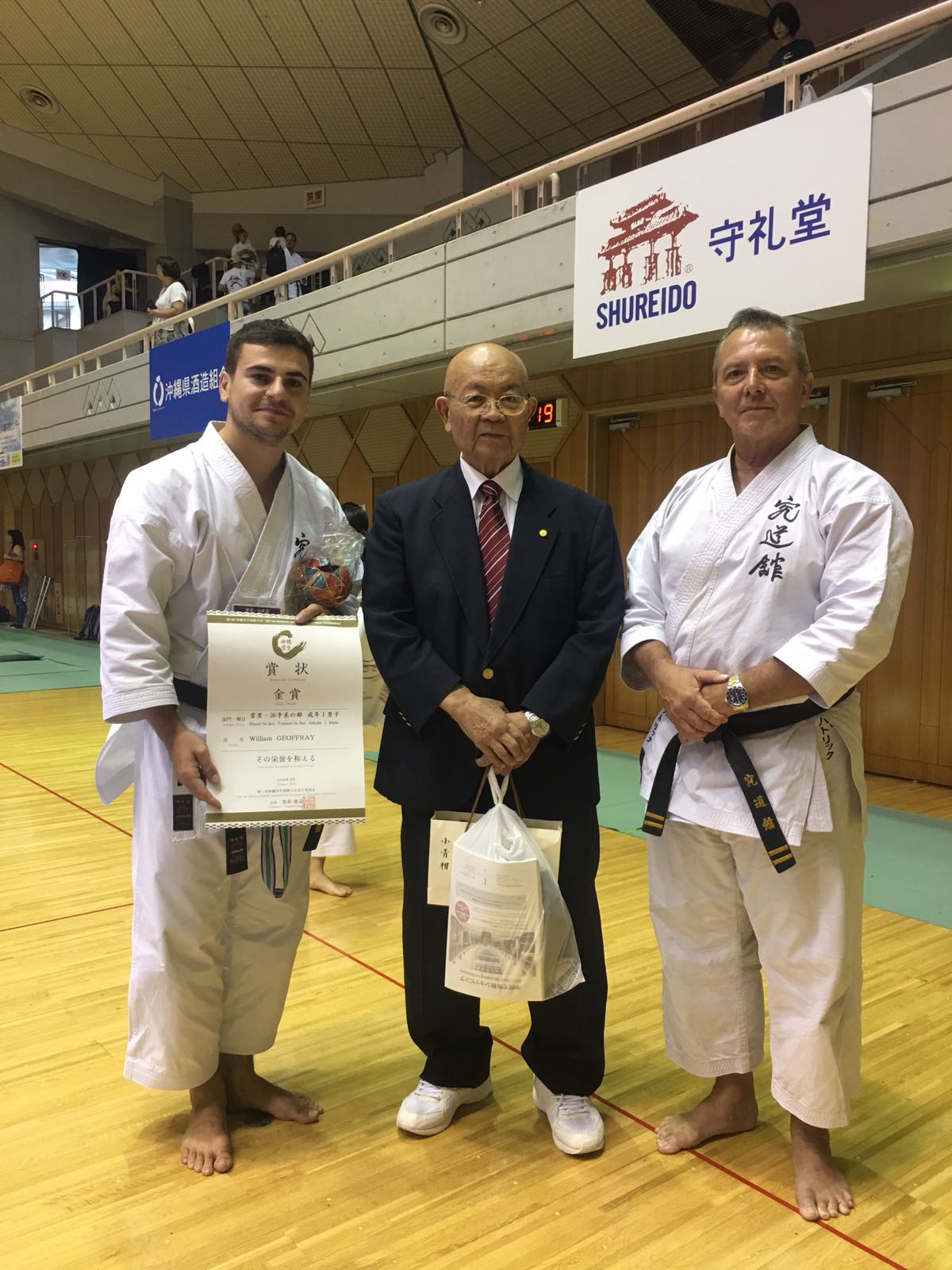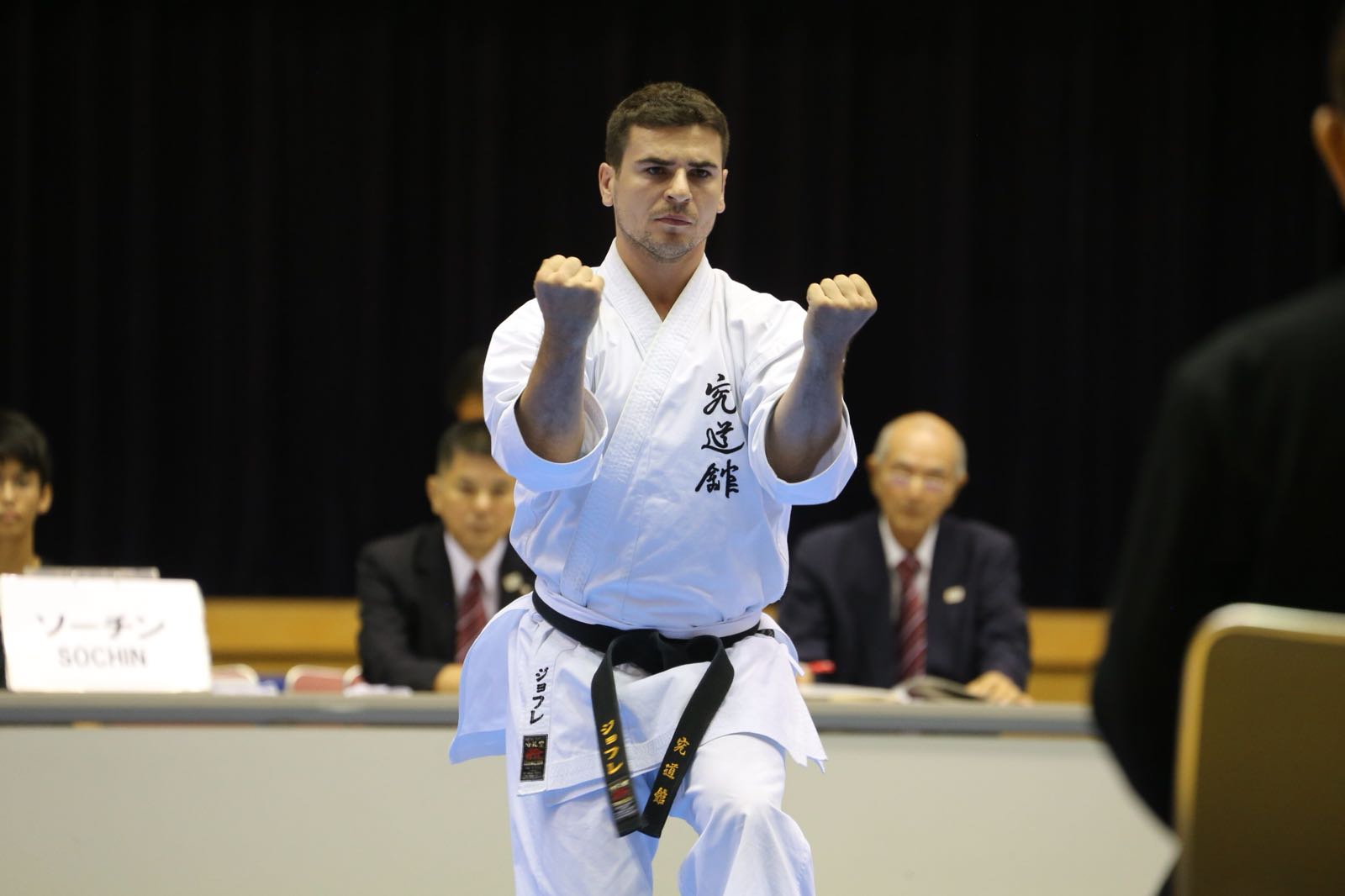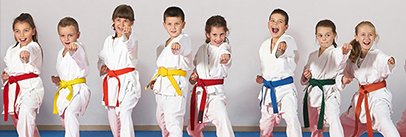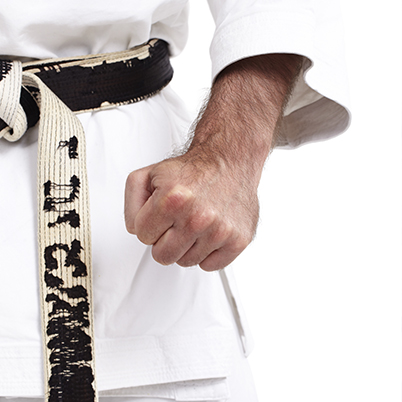There were 160 of them, only one left : William Geoffray. In front of an assembly of a thousand Dan, the Frenchman won, in Kata, the 1st « Okinawa Karate International Tournament », the equivalent of the traditional Karate Worlds. First trained in Gensei Ryu, he was the French national team member at the WKF World Championships in Linz in 2016. Meanwhile, since 2010, he was training the Kyudokan style through the teaching of Patrick Rault. School he represented with dignity in Naha before an assembly of 9th and 10th Dan. He tells us.
By Ludovic Mauchien / Photos : thanks to Shureido
He is 3rd Dan, 27 years old, and works as a National Technical Advisor at the French federation, was U17 European Champion in 2009, two-times national champion in 2010 and 2011, 3rd of the World Team championships in 2014. In 2016, he is beaten in the 1st round of the Worlds by Venezuela’s Antonio Diaz, the two-times World champion. This was his last appearance in the French team.
Since 2010, in parallel, or rather in complement, William Geoffray follows the classes of Patrick Rault, 8th Dan in Okinawa, student of Higa Sensei, 10th Dan, the Grand Master of the Kyudokan school. In early August, the French student had the honor to represent the school at the 1st « Okinawa Karate International Tournament », the new World event of traditional Karate, which replaces the « Worlds » previously organized every 6 years .
The last edition is William Geoffray's first visit to Okinawa. In 2012, with Patrick Rault, he set himself a challenge : to participate 6 years later and represent the Kyudokan School. In 2018, William Geoffray did and won the tournament ! He tells us about Okinawa...
What does the atmosphere of the Great Okinawa Kata International Tournament look like ?
The most impressive and the most stressful, apart from the many spectators, is doing a Kata in front of all the Great Okinawan masters, all the Shorin Ryu members, the representatives of each school, the 10th Dan, the 9th Dan, etc, faces that I know since little, that I look on videos (he laughs). And… I find myself lined up in front of everyone !... That puts you a little under pressure (he laughs again).
« THE MOST STRESSFUL... DOING A KATA IN FRONT OF ALL THE GREAT MASTERS »
Is it very different from a WKF championship ?
Even if the criteria are very similar to WKF competitions, the emphasis is on specificities, on details. The rhythm must be more fluid, less stopped and marked. For example, to be a little caricatural, in usual competitions, the goal of a technique is to go faster and stronger between the starting point, point A, and the final point, point B. We do not necessarily look at what is happening technically between these two points.
While in the traditional version, everything is observed : the trajectory, the way to bring the technique... The whole emotional part must also be felt. These are details that the public, which is not rookie, necessarily knows. They are really experts. They know every detail of what I am going to do.
To express oneself before such an assembly must give a particular emotion...
For sure ! Especially since that is a child's dream which comes true. Especially, too, that I was supported by my teacher, Patrick Rault, who lived it with me. He told me he had to stay behind the mat sitting in Seiza. He greeted at the same time as me, while he was not obliged to do so, to remain in symbiosis with me. I feel that he felt everything I felt. So that was the link. I felt supported by someone who knows Okinawa by heart. He lived there. He knows all the codes.
Beyond the Kata performance itself, to win such a competition is also about accepting the culture of the Great Masters, that is to say showing the respect we have for their culture, the understanding that one can have of their way of working... The behavior can be taken into account. I set myself the goal not only to have an irreproachable attitude but to be empathic with the Okinawa culture.
« I APOLOGIZED NOT TO HAVE SHOWN THE KATA AS IT SHOULD »
How is the competition organized ?
There were several phases. In the spring, there was a preliminary tournament for the Okinawans, a trial where only the first were qualified for the tournament. For the non-Okinawan people, the competition lasted 4 days in a row. We were between 130 and 160, Japanese included. The preliminary selection rounds were held on the 1st and 2nd days. For the first one, everyone did a Kata and was noted, the 8 best qualified. For the 2nd round, the method was more classical as itw as a duel. The main tournament started on the 3rd day and qualified for the semi-finals. Finally, on the last day, the ½ finals and the final were held. In all, I did 5 rounds. I did not expect it to last that long !
What is your best round ?
My ½ final against the Okinawa’s guy, in the sense that it was the most stressful round. I was opposed to somebody who played at home. The public must know him, the referees probably too. We often say that Okinawa is a small village. So, I did not know how it would be perceived.
As for my final against an American guy, I am both happy to have won and, at the same time, a little disappointed because I did not work as I wanted. I made a small mistake. It frustrated me. On leaving the mat, I apologized to my teacher for not showing the Kata as it should have been shown (he laughs). There was a small taste of disappointment.
What feeling predomantes when we win the Okinawa tournament ? Pride ? Happiness ?
It's a mix of everything ! (he laughs). I know that can be said easily, but sincerely, I feel grateful. Compared to other competitions where the approach is more individual and almost selfish, this one is the opposite. The people who helped me wanted me to do this competition, my senseï, my girlfriend, who came to Okinawa to encourage me… Many relatives helped me a lot. This project was a collective approach. When I won, I immediately thought of Patrick Rault. For him, I imagine this victory symbolizes a lot of things.
« KYUDOKAN IS A TOTALLY DIFFERENT WAY OF WORKING »
How does a sport competitor Frenchman can end up and win « The Okinawa Karate International Tournament » ?
(He laughs). I discovered Karate via the Gensei ryu style, in my little village, in the French countryside. But, in competition, since Katas must belong to the four styles recognized by the WKF, my first teacher, who also knew the Shito Ryu as well, made me work this approach to develop specific Katas for competition.
In parallel, since 2010, I trained in a traditional style. I discovered Kyudokan during a seminar of Patrick Rault. I immediately love it. When, in 2012, I came for the first time to Okinawa, we challenged ourselves to be present in 2018. I had been preparing for 5 years for this tournament, even if it was not necessarily a specific preparation to competition, but Kyudokan a new school, a totally different way of working. We had to work on basics again, to work on details.
What Katas did you like to do in the WKF competitions ?
Generally, I did Suparinpei, a Kata from Goju Ryu. I also liked Anan (or Annan), which comes from Ruei Ryu. I found it interesting that, in my program, the Katas I preferred to do were those who had the strongest connection with the Okinawan Karate.
What Katas did you present in Okinawa ?
Typical Katas from the Kyudokan style, including Sochin, which I performed in the final. It's the same name as the Shotokan one, but the Kata diagram has nothing to do with it. This one is only practiced in the Kyudokan school. I also practiced Jion, which is the common base with Shotokan, and Jitte.

William Geoffray with Higa Sensei, 10th Dan and Greatmaster of the Kyudokan school, and his teacher Patrick Rault, from France, 8th Dan.
The Kyudokan School achieved the best results of the competition. In addition to William Geoffray, several of his representatives shone on mats. In the Junior category, Tomoki Agarito ranked 2nd. Tetsuya Midorikawa finished 3rd in the +40 years division. In women's +40 years, Arisa Yara finished 2nd, Mika Kinjo ranked 3rd and Heike Operach (Kyudōkan Germany) 4th. Finally, in the +60 years, Ritsuko Higa finished 3rd.






